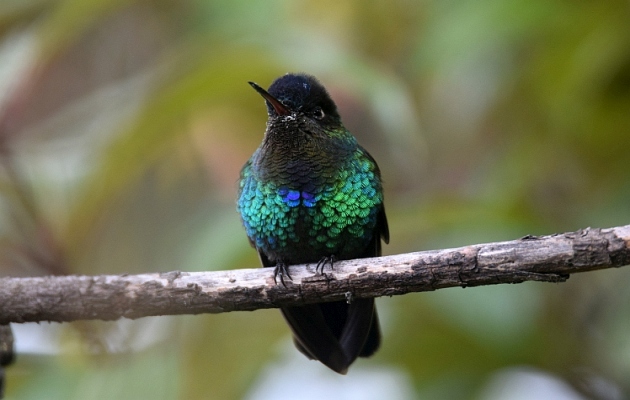
All birding is essentially good. Time spent watching any birds is time spent connecting with our natural surroundings, a time that can act as a relaxed escape as well as one of meditative focus. It’s all good and yet at the same time, there are still birding moments made special by seeing life birds, seeing and hearing birds do things we had never imagined, or losing oneself in the fantastic noise made by a flock of parakeets, geese, or migrating thrushes.
Such rare and special birding times can also include days when the birding doesn’t stop, when one finds one rare bird after another. These are the days of high quality birding and in Costa Rica, they tend to happen on Irazu Volcano.
The 11,000 foot volcano isn’t the only place to connect with high quality birding in Costa Rica but it is one of the easier places to see a number of uncommon and rare species. I was reminded of the volcano’s avian gifts while birding there last week with international birding guide Carlos Sanchez and a birder from Queens, Michael Duffy. During our morning of birding, we connected with several choice species in the dramatic montane surroundings of the Museo Nochebuena. These were some of the high quality highlights:
Maroon-chested Ground-Dove upon Arrival
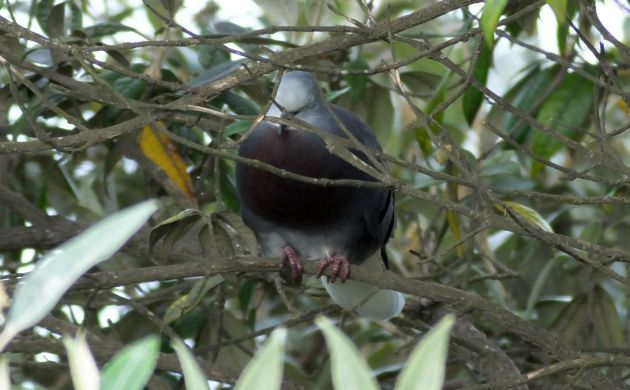
High quality birding doesn’t get much better than hearing a cool looking mega target species as soon as you step out of the car. One, then another of these difficult skulking little doves called from trees just uphill. We scanned with binoculars and a scope but the doves were no fools. Typically camera shy, they only called from the thickest of vegetation, from the other side of natural green curtains. It would take more than simply looking from the parking lot to see these beautiful montane birds.
That was alright with us, we understood shy birds, we could play by their rules. We played the dove game by slowly walking up the trail (given the high altitude, I couldn’t walk faster anyways) and looked for them from better spots. As luck would have it, one bird had flown into a short, isolated tree and continued to call from that same spot. We still had to stealth our way over to its obvious hiding place but once we got into position, there it was, pale face, purple breast, white undertail and all- perfect views of a male Maroon-chested Ground-Dove!
This fantastic bird continued to vocalize for much of the morning.
Calling Resplendent Quetzals
The ground-doves weren’t the only choice birds calling from the misty forests that morning. We were also entertained by the steady whistles of one or two male quetzals.
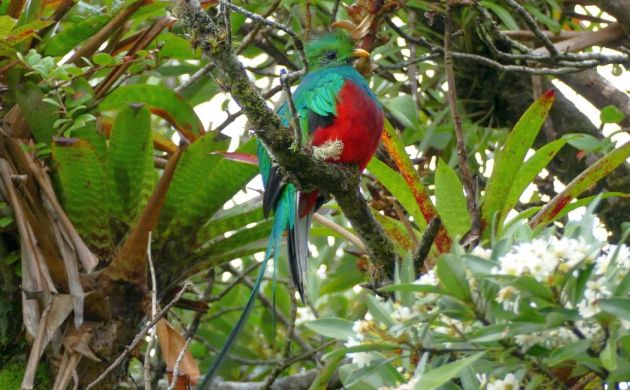
Those would be of the Resplendent kind of course.
It’s going to sound strange, even crazy, that we didn’t go looking for them but since we were focused on other birds and had seen the shimmering emerald feathered serpent before (including one that flew in front of our car on the drive up to Irazu), we settled on including the quetzal as a heard only.
Costa Rican Pygmy-Owl
However, when another choice species started calling from the misty montane forest, we did our best to see it.
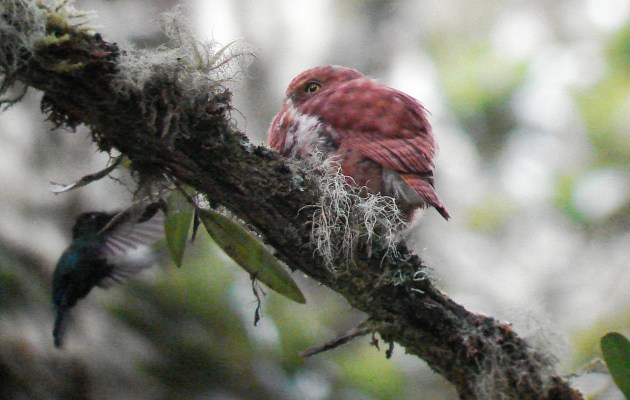
The Costa Rican Pygmy-Owl is an uncommon and local species that hides all too well in the crowns of massive trees. This means that if it doesn’t call or is not mobbed by small birds, it becomes just one more mossy lump on a high branch. Fortunately for us, our bird kept on tooting until we were able to locate it high overhead. It was a beautiful rufous morph individual that did us the favor of contiuning to call even after we walked away from it.
Wrenthrush Zone
The bamboo and herbaceous understory of the trail at the Nochebuena is perfect for the one and only Wrenthrush. By merit of its odd appearance, being a monotypic family, and being a pro skulker, any sighting of this special little bird converts a good day of birding into a high quality day of birding.
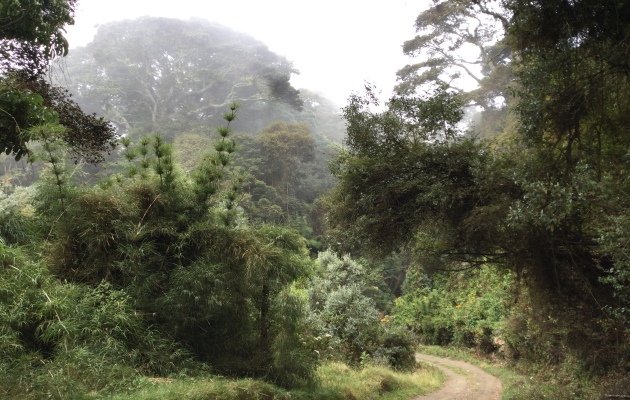
After hearing a few call, we had furtive looks at one that skipped and scuttled along the edge of a small stream.
The NocheBuena Cafe
After birding the trail in the morning, we enjoyed coffee and lunch at the Nochebuena Cafe. This small and cozy on site restaurant serves traditional Costa Rican country fare with a chance at fresh and tasty desserts. Look outside and hummingbirds are buzzing the flowers and feeder, hummingbirds of the Lesser Violetear, Fiery-throated, Volcano, and Talamanca kind. Look outside and you might hear the laughter of Acorn Woodpeckers as they swoop between snags on old growth oaks. Take another look and the mist might be rolling through a treeline of towering tropical oaks that host a calling quetzal. This is high quality birding lunch at its best.

Birding doesn’t just get that high quality stamp from the birds one sees. That special designation can also be related to the food and drink enjoyed, the birding ambiance, and the company ones keeps. On this special morning, our high quality birding hit all three of these markers to make for another memorable and beautiful day of birding in Costa Rica. I hope you visit soon for some high quality birding of your own.













Leave a Comment